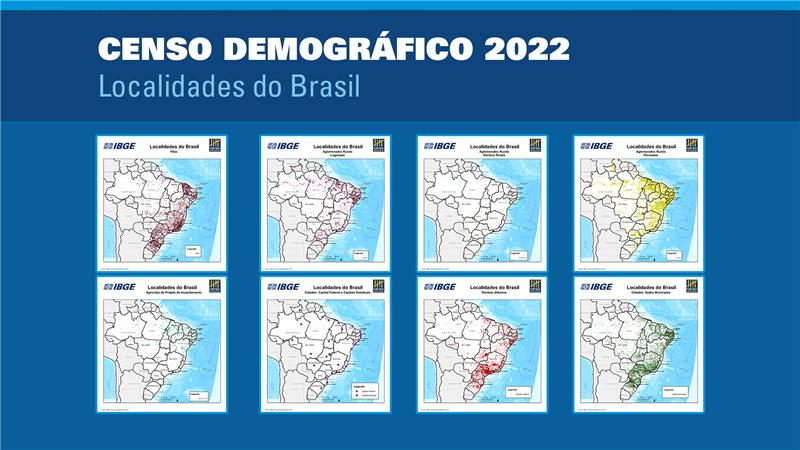Continuous PNAD
Per capita earnings hit record and inequalities fall to the lowest level since 2012
May 08, 2025 10h00 AM | Last Updated: May 08, 2025 03h46 PM
Highlights
- In 2024, per capita real monthly household earnings reached its highest value in the time series of the earnings from all sources module of the Continuous PNAD, which began in 2012: R$2,020, an increase of 4.7% compared to 2023. Compared to 2012 (R$1,696), the initial year of the time series, the increase was 19.1%.
- The per capita monthly household wage bill also reached the highest value in the series in 2024: R$438.3 billion. The increase, in real terms, was 5.4% compared to 2023. Compared to 2019, the last year before the Covid-19 pandemic, the increase was 15.0%.
- Earnings from all sources increased 2.9% compared to 2023, reaching R$3,057 in 2024, a record in the time series. Likewise, other indicators reached their highest real values since 2012: usual earnings from all jobs (R$3,225) and income from government social programs (R$836).
- The share of earnings from work in the composition of per capita household earnings increased from 74.2% to 74.9%, from 2023 to 2024. Despite the increase, this proportion is still below the series' maximum (76.9%) reached in 2014.
- The share of social programs in per capita household earnings changed from 3.7% to 3.8%, from 2023 to 2024, remaining well below the series' peak (5.9%), reached in 2020, during the pandemic.
- The 1% of the population with the highest earnings received the equivalent of 36.2 times the earnings of the 40% with the lowest earnings. This was also the lowest ratio in the continuous PNAD series. The peak of this indicator (48.9 times) was reached in 2019.
- The Gini index of the per capita real monthly household earnings reached the lowest in the time series: 0.506. The highest Gini in the series (0.545) occurred in 2018. This indicator measures income concentration and ranges from 0 (maximum equality) to 1 (maximum inequality).

In 2024, the per capita monthly household earnings, which is the sum of all population' earnings, reached its highest value since 2012: R$438.3 billion. This was an increase of 5.4% compared to the previous year. Compared to 2019, the year before the Covid-19 pandemic, there was an increase of 15.0%. This is information from the annual module of the Continuous PNAD on Earnings from All Sources, released today (08) by the IBGE.
The per capita real monthly household earnings also reached the highest value in the series in 2024: R$2,020, an increase of 4.7% compared to 2023. Compared to 2012 (R$1,696), the initial year of the time series, the increase was 19.1%. The Northeast had the lowest value (R$1,319) and the South, the highest (R$2,499). Among the Federation Units, the Federal District (R$3,276) led, followed by São Paulo (R$2,588) and Santa Catarina (R$2,544). The lowest value was in Maranhão (R$1,078), followed by Ceará (R$1,210) and Amazonas (R$1,231).
Meanwhile, earnings from all sources, of the resident population with earnings, increased 2.9% compared to 2023, reaching R$3,057 in 2024, a record in the time series. Likewise, other indicators reached their highest real values since 2012: usual earnings from all jobs (R$3,225) and income from government social programs (R$836).
Despite the increases, regional differences remained quite strong: the South Region recorded the highest value (R$3,576), followed by the Central-West (R$3,569) and Southeast (R$3,497) regions, while the lowest was recorded in the Northeast Region (R$2,080). From 2023 to 2024, the growth in earnings from all sources in the South (9.5%) and Northeast (6.1%) regions stands out, while the North Region showed a negative fluctuation of 1.0%.
Compared to 2019, the sharpest change was observed in the North Region (11.6%), followed by the South (8.8%) and Central-West (8.7%) regions. In the Southeast Region, on the other hand, with a fluctuation of only 0.1%, the average value of earnings from all sources practically did not change in this five-year interval.
Population with earnings also hits record in 2024
The record levels of the main types of earnings in 2024 are associated with the increases in the population with earnings (143.4 million), the population with regular earnings from work (101.9 million) and the population receiving retirement and pension benefits (29.2 million). These three groups have their largest contingents since 2012, when the Continuous PNAD Contínua time series began.
The population receiving benefits from government social programs also grew, going from 18.6 million in 2023 to 20.1 million in 2024. However, despite the increase, this contingent of beneficiaries is far from the peak of the series (27.5 million), reached in 2020, during the Covid-19 pandemic.
Earnings from work is still the largest share
The share of earnings from work in the composition of per capita household earnings increased from 74.2% to 74.9%, from 2023 to 2024. Despite the increase, this proportion is still below the series' peak (76.9%) reached in 2014.
According to Gustavo Fontes, an analyst at the IBGE, “throughout the Continuous PNAD time series, earnings from work have accounted for approximately three-quarters of household earnings. Between 2023 and 2024, the share of earnings from all jobs in household earnings had a small positive change, which reflects the dynamism of the labor market in the last year, with the expansion of average earnings from work, of the employed population and, consequently, of the wage bill from work, which reached the highest value in the time series”.
The share of social programs in per capita household earnings changed from 3.7% to 3.8%, from 2023 to 2024, well below the peak of the series (5.9%), reached in 2020, during the pandemic. However, this share was above the pre-pandemic period: in 2019 (1.7%). The proportion of households in the country with a Bolsa-Família program beneficiary reached its historical peak (19.0%) in 2023 and fell slightly (18.7%) in 2024.
Retirement leads among earnings from other sources
Among the categories that make up earnings from other sources, retirement and pension remained the highest average value in 2024 (R$2,528), with a small fluctuation compared to 2023 (R$2,512), but still remaining 3.1% below that observed in 2019 (R$2,608).
Between 2023 and 2024, the participation of the retirement and pension category fell from 17.5% to 16.8% in the composition of per capita household earnings in the country. Income from retirement and pension showed significant regional differences. The Northeast had the highest share (19.9%), followed by the South (17.1%) and Southeast (16.6%). In the North and Central-West regions, the shares were 14.0% and 13.6%, respectively
Inequality falls to the lowest level since 2012
Although still very high, three indicators that assess income inequalities in the Continuous PNAD fell to their lowest levels in the time series, which began in 2012. In 2024, the 10% of the population with the highest earnings received the equivalent of 13.4 times the income of the 40% of the population with the lowest earnings. This was the lowest ratio in the time series, which reached its peak (17.1 times) in 2018.
According to Mr. Fontes, “in 2024, the per capita average household earnings of the 40% of the population with the lowest income reached its highest value in the time series. Among the factors that can explain this growth are the dynamism of the labor market in recent years, with the increase in the level of employment and the growth of the average earnings from work, including in the lowest deciles, as well as the rise of the minimum wage and the receipt of benefits from different government social programs”.
The 1% of the population with the highest earnings received the equivalent of 36.2 times the income of the 40% with the lowest earnings. This was also the lowest ratio between these two segments in the entire survey series. The peak of this indicator (48.9 times) was reached in 2019.
Finally, the Gini index of the per capita real monthly household earnings also reached its lowest level in the time series: 0.506. The highest Gini in the series (0.545) was in 2018. This indicator measures income concentration and ranges from 0 (maximum equality) to 1 (maximum inequality).
Mr. Fontes highlights that, “between 2023 and 2024, the increase in per capita earnings occurred with greater intensity at the lower limit of the distribution (i.e., in the lowest income classes), while at the upper end of the income classes, the growth in per capita earnings was well below the national average”.
More about the survey
The Continuous PNAD: Earnings from All Sources (2024) provides data on earnings from work and other sources, such as retirement, pensions and social programs. Among the key indicators are the average monthly real household earnings, the average real income from all sources, the per capita average income from other sources and the Gini Index of the per capita average monthly real household earnings. There is data for Brazil, Major Regions and Federation Units. For more information, please access the support material and the full publication.

















